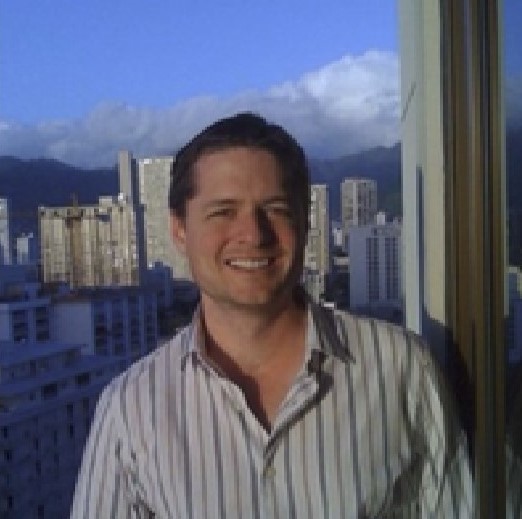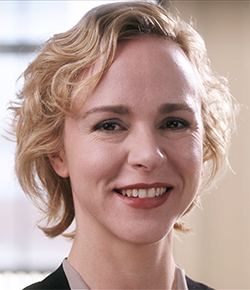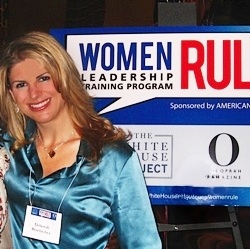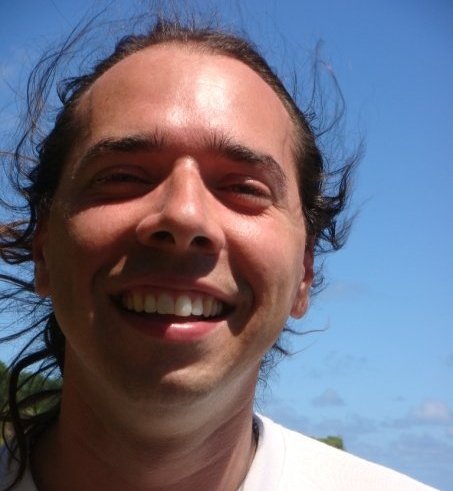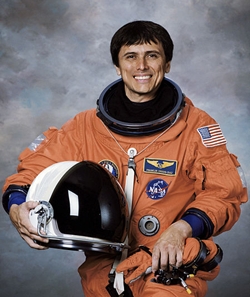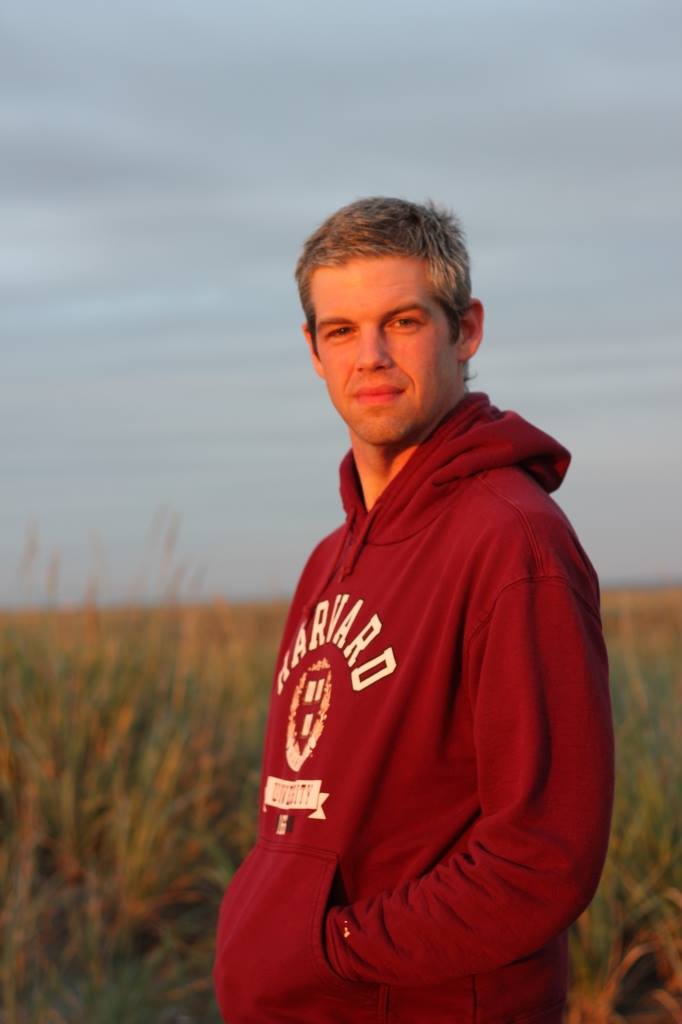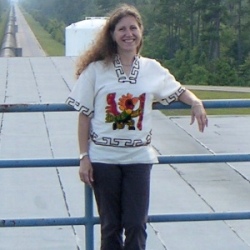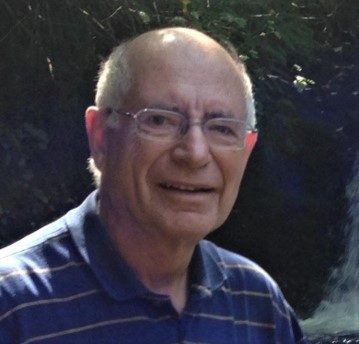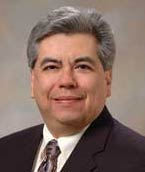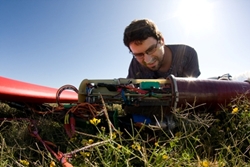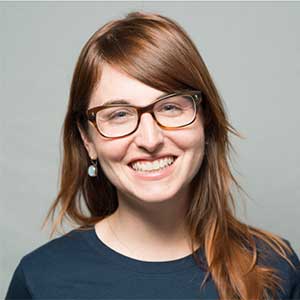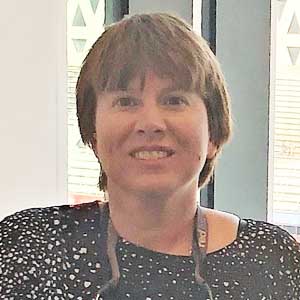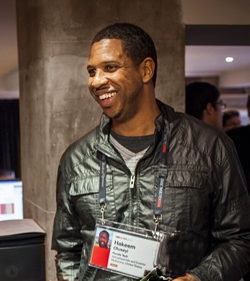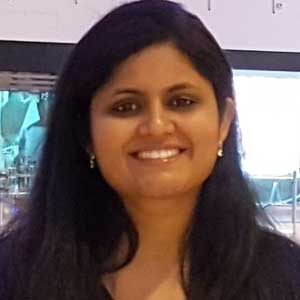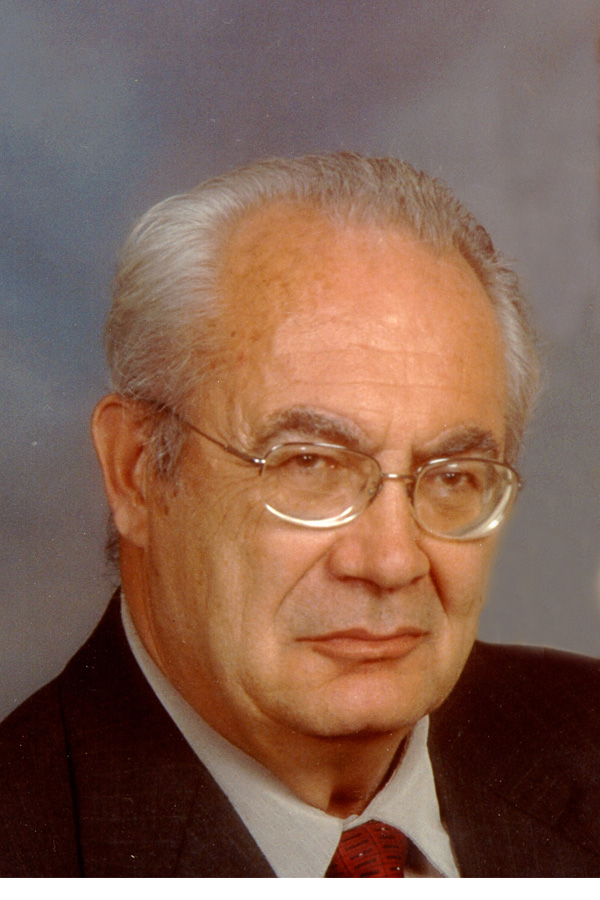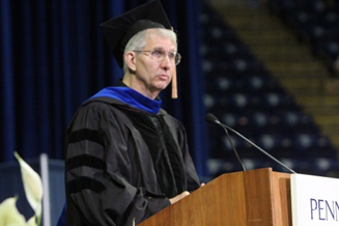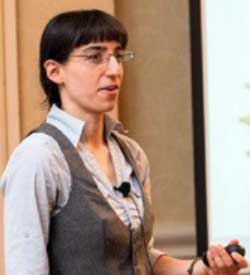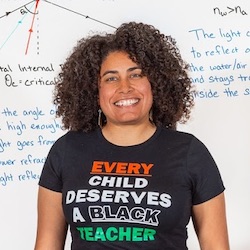Matthew Abroe (Physics PhD)
Portfolio Manager at Black River Asset Management
Matthew, who enjoyed mathematics and his high school physics class, decided to major in physics in college, which ultimately led to his PhD.
After graduate school, Matthew got a job as a quantitative analyst, where he built analytical tools for finding trading opportunities in global financial markets.
"A friend from grad school got a job at a hedge fund, which is how I learned about finance as a possible career path. While applying for post-docs, I also sent my resume to Black River, which led to a job offer."
After several years as an analyst, Matthew moved into a portfolio manager role who makes investment decisions. He now manages a team of 8 investment professionals who allocate capital to large domestic and international investors.
"The analytical lessons I learned doing physics research were crucial in developing the systematical tools I use for analyzing financial markets."
Meghan Anzelc (Physics PhD)
Analytics Manager at CNA Financial
On the recommendation of a professor, Meghan decided to try a physics course in college. While it was not an easy class, she really enjoyed the material and decided to minor in physics.
"A summer research internship got me hooked on experimental science, and pursuing that interest is what led me to complete a B.S in physics and then go to graduate school."
Meghan's first job after graduate school was in predictive modeling at an insurance company. Now, she is the Assistant Vice President of Pricing for the small business segment at CNA Fincancial.
"My current role in the Actuarial Department gives me more exposure to the underwriting side of [CNA] and how the business of insurance is run."
Deborah Berebichez (Physics PhD)
Vice President of Risk Analytics at Morgan Stanley
Debbie grew up in a conservative community in Mexico City that strongly discouraged girls from pursuing careers in science. She received a scholarship to study philosophy at Brandeis University, but fell in love with physics while taking an intro level astronomy course.
During her senior year, she realized she couldn't live with herself without having tried to study physics, but her scholarship would run out before she had the chance. The physics department allowed her to skip the first two years of the major requirements if she could teach herself the material in one summer. She was successful, and completed her physics degree before her scholarship ended.
After becoming the first Mexican woman to graduate from Stanford with a PhD in physics, Debbie went to Wall Street to become a quantitative risk analyst, using math models to manage the financial risk of investments.
"I would love to become a female role model for those girls who love science but somehow feel trapped, like they can't achieve their dreams," Debbie says. "I want to become the new 'Oprah' of science."
Bryce Beverlin II (Physics PhD)
Founder of Quench Medical, St. Paul, MN
The son of a physician and a nurse, Bryce first caught the physics bug when he read a "Fun with Physics" book as a child. Multiple great physics teacher in high school continued to nurture his interest, and after graduating with a Bachelor's in music from Northwestern, he returned to Minnesota to pursue a BS in physics and astrophysics at the U.
"I loved the intertwining of the two physics majors, the awe of the vast, unsolved problems in the cosmos, and the insanity of happenings at the quantum mechanical scales."
As a graduate student, also at the U, Bryce took a course in Neural Engineering and got hooked on applying his physics problem solving skills to biological systems. He earned his PhD studying potential therapies for neurodegenerative diseases like epilepsy.
After a post-doc at the U's Medical Devices Center, Bryce started his own company, Quench Medical, which develops novel inhaled therapies to treat lung diseases like asthma, COPD, and lung cancer.
"The complexity of biology is staggering, and I still use my basic physics problem solving skills on a daily basis. The difficulty of completing a physics degree parallels real life: keep trying new ways of solving problems, and don't give up!"
Charlie Blackwell (Physics PhD)
Product Development Manager at Suominen Corporation
Charlie graduated from public high school in the suburbs of Atlanta and headed to Florida A&M University. He initially wanted to major in genetic engineering, but switched to physics.
"I chose physics because I wanted the flexibility to choose from a variety of careers," he says.
The summer before his senior year, Charlie interned at the University of Minnesota and got excited about experimental condensed matter physics. His advisor encouraged him to apply to the graduate program.
After earning a PhD, Charlie started as a Senior Product Development Engineer in the aerospace group at 3M. Now, with Suominen Corp, he is a Product Development Manager designing nonwoven materials, which are used for hygiene products as well as wet wipes and swabs. Charlie credits his physics degree with his success in multiple fields.
"The physics degree has allowed me to become the subject matter expert in many projects because of the ability to learn new subjects in depth. I can more easily adapt to new topics."
Franklin Chang-Diaz (Plasma Physics PhD)
Astronaut and Founder and CEO of Ad Astra Rocket Company
Born in Costa Rica and raised during the Cold War era, Franklin was captivated by the Sputnik satellite and the beginnings of space exploration.
"I felt one day humans would travel to distant planets, and I wanted to be one of those travellers...That was the beginning - my earliest memory of being fascinated by space."
After graduating high school in Costa Rica, Franklin immigrated to the United States and started high school all over again, eventually earning a full ride scholarship to the University of Connecticut for engineering.
NASA cancelled its space flight program shortly after the moon landing, and Franklin used the opportunity to earn his PhD in Plasma Physics at MIT. When the space program returned in 1977, he applied for astronaut recruitment, and finally got his chance to go to space, becoming one of the first scientists to fly without a military background.
"When I first started, it was clear that being a scientist made you less likely to fly. But that didn't seem right to me," Franklin says. "Throughout my years in the astronaut corps, I think I helped bridge that gap."
Paul Edmon (Astrophysics PhD)
Research Computing Associate, Harvard Institute for Theory and Computation, Cambridge MA
Paul loved space and stars; he wanted to be an astronaut. He discovered a knack and love for physics in high school and knew that you needed a PhD to be an astronaut, so he went off to the University of Washington to study physics.
As an undergraduate Paul joined a research group detecting cosmic rays. In graduate school at the U he continued to study cosmic rays, now studying their origins and developing numerical simulations of their acceleration mechanisms. Part of this research was carried out using supercomputers that are part of the U's Minnesota Supercomputing Institute.
"I found that I really enjoyed using the largest machines in the world to simulate the largest explosions in the universe which accelerate the fastest particles we know of."
After working as a postdoc at the University of Manitoba, Paul is now running a supercomputing cluster at the Harvard/Smithsonian Center for Astrophysics (CfA) helping researchers with their computing jobs. His background in astrophysics helps him understand what researchers need.
"While day to day I don't do astronomy anymore, the knowledge I gained during my PhD has allowed me to think at multiple scales, and to understand what the astronomers at CfA are trying to accomplish."
Gabriela González (Physics PhD)
Professor at Louisiana State University
Gabriela initially wanted to be a math teacher, like her mother. But her first physics class in high school changed that.
"I was amazed at how we could 'explain' the world with physics, and we could predict what objects would do. When I found out this also applied to stars and the universe and that there were unknown phenomena waiting to be discovered, I decided I couldn't do anything else!"
After going to college in her home country of Argentina, Gabriela moved to Syracuse University for her PhD, focusing on gravitational waves.
Now, Gabriela still works on gravitational waves at LIGO in Livingston, Louisiana, and is a professor of physics and astronomy at Louisiana State University. She says that learning how to get help from experts and how to successfully work with others were just as important as the physics concepts she learned.
"The best lesson from [my training] was learning to ask questions - always ask 'Why?!'"
Steve Gustafson (Physics PhD)
Research Physicist, University of Dayton in Dayton, OH
Professor at Air Force Institute of Technology near Dayton OH, Retired
When Steve started at the U in 1963, new technologies like satellites and transistors made it an exciting time for physics.
"I was drawn to physics as a way to understand technological innovations that were new," he says.
As an undergraduate, Steve built equipment to detecto low-energy cosmic rays. As a graduate student at Duke University, he worked on microwave molecular spectroscopy. Steve credits his physics background for his ability to work on a variety of projects throughout his career
"I found that my education in physics enabled me to 'jump right in' on numerous opportunities and assignments."
After earning his PhD, Steve started a career as a research physicist at the University of Dayton, contracting with a variety of companies, focusing on optical phenomena for aerospace companies and government agencies. Later in life, he started teaching graduate courses in electro-optics and artificial intelligence, finished his career at the Air Force Institute of Technology. He found teaching to be very satisfying, and a great end to an enjoyable career.
"My career in physics was diverse and enjoyable. I wouldn't change any of it!"
Carlos Gutierrez (Physics PhD)
Professor of Materials Physics at Texas State University, San Marcos
Carlos first became interested in science while listening to the Aztec folktales his grandmother told him as a child. The astronomy in those stories inspired him to study the stars.
While in graduate school, Carlos became interested in materials physics, and how observation and detection technology works.
"I just wanted to know how everything worked," he says.
Now a professor at Texas State University, San Marcos, Carlos collaborates with engineers and industry studying materials with properties that might be useful for sensors in areas from telecommunications to microelectronics.
In college, Carlos had a hard time finding Hispanic physicists to be his role models. Now, he strives to provide students with an example of a successful minority physicist and supporting college students through his role as faculty advisor to the Society of Mexican-American Engineers and Scientists, and the Society for the Advancement of Chicanos and Native Americans in Science.
"I do what I can to let the students know that if they really are interested in physics, that it is a viable and exciting career," he says.
Kenny Jensen (Physics PhD)
Wind Power Startup Engineer at Makani Power
Kenny is an inventor at heart and loved the freedom physics gave him to use all his creative and innovative skills.
"[To] create truly new innovations, you need to understand how and why things work down to the last detail, which requires physics," he says.
Kenny studied carbon nanotubes, and their receiving properties as nanoradios, while earning his PhD from the University of California, Berkeley.
Now, Kenny works at the wind-power startup company Makani Power. Makani Power harvests high altitude wind energy using unmanned aircraft flying at high altitudes. Kenny's job is to design the systems that control these aircraft.
"Energy will be one of the great problems facing humanity in the 21st century," Kenny says. "And physicists, with their strong technical background and physical intuition, are especially well positioned to attack this problem."
Although Kenny doesn't have an engineering degree, his physics education has more than equipped him for success in his current job.
Yung Tae Kim (Physics PhD)
Physicist and Educator at Puget Sound Community School
Tae, who enjoyed mathematics in high school, signed up for an honors physics class in college. The class only had 8 students and a great professor.
"[The physics class] was personalized, and it had a huge impact on me."
Tae became a physics professor, but wanted to keep that personalized dynamic alive for his students. He turned his advanced classes into workshops.
Eventually, Tae became a consultant in video games, providing his skateboarding physics expertise to titles such as "Tony Hawk: SHRED and RIDE." Now, he serves on the advisory board for a community school geared toward learning at the student's pace.
"I don't have a 'career'-I work on things that I find interesting, and my training in science has given me that adaptability."
Jessica Kirkpatrick (Astrophysics PhD)
Director of Data Science and Digital Exploration at KoBold Metals
Neither of Jessica's parents worked in technical fields, so it wasn't until her first physics class in high school that she realized how physics uses math to understand the world. Despite being diagnosed with a learning disability, she did so well in her AP Physics class, that her teacher told her to pursue physics in college.
"That was the first time a teacher had ever said to me 'You have a talent, you should do this'," Jessica says.
After earning her PhD in astrophysics at UC Berkeley, Jessica applied to a variety of jobs, eventually choosing to work in the tech industry.
"What attracted me to tech in particular was that it felt like a good way to apply my technical skills but in a way that was more down to earth."
She has since worked as a data scientist at a variety of companies, including Microsoft, Chegg, and Slack. Now, as Director of Data Science and Digital Exploration at KoBold Metals, she focuses on modeling and machine learning.
"[Data science is] really fun because I'm constantly working on different areas and different focuses," she says.
Kathy McCormick (Physics PhD)
Radiation Detection Expert for Customs and Border Protection at the US Department of Homeland Security
Kathy always loved science, but it was a high school physics class that changed Kathy's college plans to physics.
"Physics seemed to be the most fundamental of the sciences that I had studied. [Physics gives] you insights into many different fields."
Now, Kathy is a subject matter expert for US Customs and Border Protection (CBP). She defines regulations and tests the sensitivity and functionality of new equipment which will be deployed to field sites. This equipment is used to guarantee the security of cargo entering the United States, a process which includes scanning for illegal radioactive material.
"During my thesis research, I had the opportunity to work on many different types of radiation detection equipment and perform analysis on my data," says Kathy. "I use those skills a lot today."
Hakeem Oluseyi (Physics PhD)
Professor at Florida Institute of Technology
Hakeem moved between rough neighborhoods as a kid, and spent a lot of time indoors watching PBS and reading.
"I discovered Jacques Cousteau on TV and Albert Einstein in my reading. The effects of relativity just knocked my socks off!...I thought, 'Man! Scientists are super cool!'"
When a science fair judge told him he should become a physicist, Hakeem dismissed the idea, and chose to enlist in the Navy. But then he decided to major in physics, eventually earning his PhD from Stanford.
After finishing school, Hakeem worked in Silicon Valley, researching the manufacturing of computer chips, earning 8 U.S. patents and 4 E.U. patents. Today, he is a professor at the Florida Institute of Technology, and a member of the team developing the Large Synoptic Survey Telescope. He also vists sub-Saharan African schools through an organization called Cosmos Education, inspiring students with science demonstrations.
"I find service to students and humanity as exciting as making a new scientific discovery. That is my life - I educate, I inspire, and I research," Hakeem says.
Neha Pachauri (Physics PhD)
Process Technolgy Development Engineer at Intel
Growing up in India, Neha chose to study science because it has good job prospects, and her curiosity drove her to study physics in college.
Neha taught undergraduate physics for two years after earning her Master's in India, before coming to the U.S. for her PhD in experimental condensed matter. Although she didn't know much about it, she wanted to explore a career in industry.
"I wanted to explore real world applications of my research work and get industrial experience," Neha says.
At Intel, Neha works in the fabrication facility on turning wafers into microprocessors. She also researches new production techniques. Neha's background in physics has helped prepare her for conducting experiments, analyzing data, and understandng and improving upcoming technology.
"The skills I learned during my research were really transferable to what I saw in the job profile [at Intel]," she says.
Karl Pfitzer (Physics PhD)
Senior Technical Fellow at McDonnell Douglas (now Boeing), Huntington Beach CA
Money had always been a problem in Karl's family, but he was awarded a scholarship that paid for his tuition and a place to live at the University of Minnesota.
Originally a chemistry major, Karl switched to physics after Organic Chemistry his sophomore year convinced him he did not want to be a chemist.
"I felt that physics was what I needed in order to understand how the world worked...that it would give me the training I needed to do almost any job."
Karl started working in a research lab building NASA funded satellites, the start of a long career working on technology in space. Karl stayed on at the U to earn his PhD developing an instrument that could fly in space to measure electrons in the Van Allen Belt. Teaching an advanced physics course after earning his PhD, Karl decided that academia wasn't for him and he took a research job at McDonnell Douglas in California.
Early in his career with McDonnell Douglas, Karl worked on solving problems in space. For example, he calculated for NASA the radiation dose astronauts would experience in space. As he advanced through his career, his physics education gave him the backgrond to support a wide range of engineering projects.
"One engineer commented 'for a physicist, you are a pretty good engineer.' The incredible diversity of the work I had to do for my PhD thesis gave me the tools to excel as an engineer."
Rick Robinett (Physics PhD)
Professor at Penn State University in State College, PA
Although physics and math were his favorite classes in high school, Rick started his undergraduate career at the U as an architecture major. That didn't last very long, and he soon switched back to math. The intro level physics courses he took opened his eyes to a new career possibility.
"I realized that the beautiful mathematics that I'd been seeing so abstractly could have real-life applications."
After graduating with degrees in physics and math, Rick followed the academic route. He earned a PhD in theoretical particle physics from the U, took two postdoctoral positions, and then landed a faculty job at Penn State University. He had two stints as associate dean.
Although he followed the standard academic path, Rick has also been an enthusiastic advocate for the diversity of career options a physics degree can provide. At Penn State, he teaches a "junior careers course," exploring post-undergraduate career options for students in the physics program.
"I encourage all physics majors, wherever they are, to explore career opportunities through networking. Use the excellent information available from the American Physical Society and the American Institute of Physics and take advantage of Linkedin.com to connect with peers and mentors."
Brenda Rubenstein (Physics PhD)
Postdoctoral Researcher at Lawrence Livermore National Laboratory
In college, Brenda looked for a career path that would allow her to make a positive change in the world. She was struck by the power of simple ideas in physics.
"A single person's efforts can amount to something profound. That notion is what initially drew me to physics and what continues to do so today."
Today, Brenda works as a postdoctoral researcher at Lawrence Livermore National Lab (LLNL). Brenda says she enjoys working in a national lab: after graduate school, she wanted to balance her time between research and mentoring opportunities.
"Lab scientists get the best of both worlds in this regard - while they often mentor other scientists, they still have the opportunity to conduct their own day to day research."
Desiré Whitmore (Chemical and Material Physics PhD)
Senior Physics Educator at Exploratorium
Desiré always enjoyed learning about science, engineering, and math, in particular taking things apart and putting them back together. She majored in chemical engineering in college, but found that the courses were not as stimulating as her introductory physics classes had been.
In grad school, Desiré realized that she also loved teaching while working at a local kids' museum. After completing her postdoc at UC Berkeley, she decided to look for a job in teaching.
"I really like taking complex ideas and turning them into something that a [layperson] can understand, including a child," she says.
At the Exploratoium in San Francisco, Desiré works on public programming, training employees and professional development experiences for middle and high school teachers.
